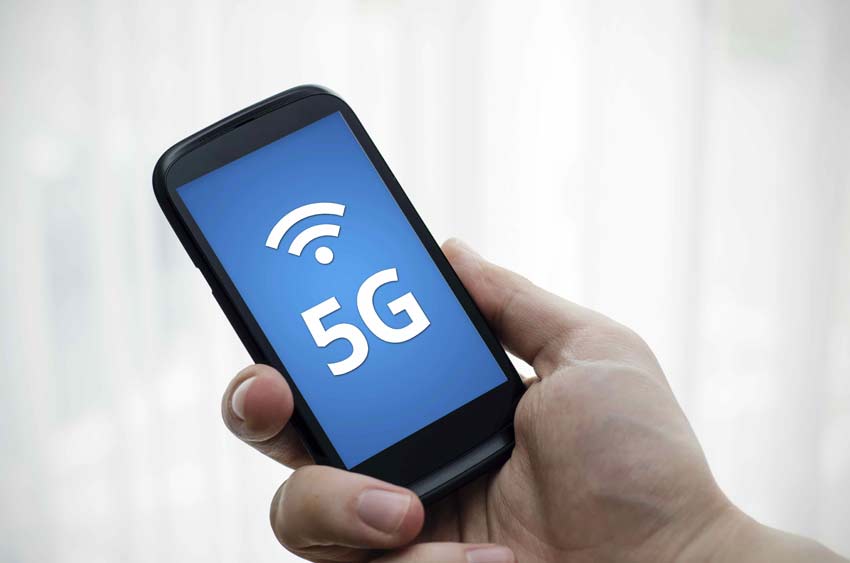The Telecom Infrastructure Industry with more than 5 Lakh mobile towers mounted with 20 lakh BTSs extends mobile telecommunication services to more than 1.1 billion subscribers. In the last year, the telecommunications industry added around 40,000 mobile towers with around 2 lakh 90 thousand BTSs.
Undoubtedly, the Indian telecommunication sector has undergone a revolutionary transition in the last two decades to become the world's second-largest telecommunication market. As per the government report, the mobile sector's contribution to GDP is presently 6.5 per cent and will increase to 8.2 per cent by 2020. This could further be expanded if India could set up robust telecom infra for reaping the benefits of next-gen technologies like 5G, IoT and M2M.
The year 2018 was majorly the year of positive developments and synchronisation on the business, policy and regulatory front. The biggest good news was the inclusion of IP-1s under the purview of Right of Way Rules 2016 vide Office Memorandum dated 22 May 2018.
Further, the year captured other significant developments such as the amendments in Gujarat policy ensuring a level playing field, cancellation of discriminatory tender by Kozhikode corporation for the deployment of high masts, IBS deployment in government buildings for seamless network connectivity and development of online single window portal by states like Jharkhand, Haryana and Assam and etc.
Robust telecom infra needed for 5G, IoT and M2M
Further, the year 2018 witnessed the notification of NDCP 2018 which is an overarching forward-looking and reformative comprehensive policy to transform India into a digital society by enabling futuristic technologies such as the expansion of 4G, 5G, fiberisation, cloud computing, blockchain, M2M, IoT, AI, and VR etc.
For infrastructure Providers, the policy included numerous provisions such as Enhancing the scope of IP-1s, fibrisation of 75-80 per cent towers to extend world-class high-speed internet connectivity, an extension of incentives and exemptions for the construction of telecom towers, safety and security of telecom towers and setting up National Fibre Authority etc.
In the year, there were significant developments in the implementation of Right of Way rules, 2016 at the state level, in totality 12 states and UTs aligned their policies with that of the central government, policies in 14 states are still under discussion while there are no uniform policies across 10 states and UTs. It is worth highlighting that DoT extensively supported the industry by proactively writing and organising a seminar with states for the implementation of the said rules.
The year 2018 reinforced the business relevance of the ‘sharing' business model- a homegrown business concept, which is a Harvard Business School case study and is being emulated globally. Under the sharing concept, the towers are shared on a non-discriminatory and transparent basis. The concept has advantages such as efficient use of Capex, improved aesthetics, faster rollouts, energy savings, and better coverage quality.


With the industry's commitment to developing green sustainable telecommunication, the industry converted around 15,000 mobile tower sites taking the total count of diesel-free sites to 1 lakh 5 thousand sites.
However, on the other hand, the ease of doing business was hindered due to exclusion of telecom towers from availing Input Tax Credit under the GST regime, levy of Property Tax by treating mobile towers as land & building, coercive actions such as OFC cable cutting and mobile tower sealing by states etc.
Telecom infra in 2019
It is obvious to say that the Digital India and Smart Cities mission can be realized to its true potential only when the infrastructure for ‘last mile' connectivity has been established. In order to accelerate the deployment of telecom infrastructure and bridge the digital divide in the country.
Now, as we head towards the new year 2019, the telecom infrastructure industry strongly believes that the future of Indian TowerCos rests on the exponential rise in data traffic and harnessing emerging business opportunities. Rapid expansions of 4G will drive the increase in the tenancy ratio. Various emerging technologies such as the internet of things, machine to machine communication, artificial intelligence and connected devices have led to an increased demand for a robust and scalable infrastructure.
Further, the Government's thrust on the launch of 5G services, digital India, smart cities, Bharat Net, the proliferation of 4G services will boost the demand for the roll-out of telecom infrastructures such as fibre cable, telecom towers, small cell solutions, Wi-Fi networks and IBS. The physical infrastructure needs to be robust to meet the growing need and demand for ubiquitous connectivity.
Going forward, the introduction of 5G services, along with the explosion of internet-of-things, will bring the need for infrastructure sharing which is expected to emerge as a key trend.
The next-generation telecom infrastructure will be one of the core pillars in the transformation of India into a digital economy. Telecommunication services are a catalyst to empower citizens by providing them with transparent governance and services (education, health, legal, financial and safety) at their fingertips.
DoT has extensively supported the industry by organising a state-level seminar for the implementation of RoW rules to facilitate time-bound and hassle-free single-window clearances for the requisite backhaul etc. In the forthcoming time, if the state aligns with the Centre's ruling the development of robust telecom infrastructure will be seamless, which is the need of the hour for ubiquitous connectivity and new technologies such as 5G, IoT, M2M, AR and VR etc.
The author is Director General, Tower and Infrastructure Providers Association (Taipa), an industry representative body.







